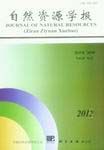Resources Evaluation
WANG Jin-song, LI Yi-ping, REN Yu-long, LIU Yuan-pu
In order to realize the applicability of common drought indices, the application situation of several drought indices in the Yellow River Valley is analyzed by using monthly precipitation, temperature and evaporation data of 145 stations in the valley from 1961 to 2010. These indices include comprehensive index (CI) of meteorological drought, standardized precipitation index (SPI), Palmer drought severity index (PDSI), precipitation anomaly percent (Pa) and K drought index. The results show that K drought index and CI of meteorological drought can get the best monitoring effect for the real drought for the past 50 years when making comparisons among these five drought indices, then followed by SPI, Pa and PDSI. When comparing CI with K drought index, we found that CI can monitor drought with a weaker effect to the real drought, so it could leave out some heavy drought processes in the research area, and K drought index can monitor drought with a heavier effect for some regions such as Qinghai, middle and west Inner Mongolia, at the same time, it could leave out some heavy drought processes in summer and autumn in Henan. In summary, K drought index has the best monitoring effect in the Yellow River Valley, the monitoring effect of K drought index can best reflect the conditions of real drought except for using it in summer and autumn of Henan and winter of Inner Mongolia, for under such conditions it was suggested to use CI; the monitoring effect of K drought index and CI both fit well for summer in Inner Mongolia, so these two indices can be combined to monitor drought in this region; K and Pa can be used together to monitor drought in winter of Shandong, but Pa is suitable for drought monitoring in summer of Shandong; and it is suggested to use SPI for all seasons in Qinghai.
